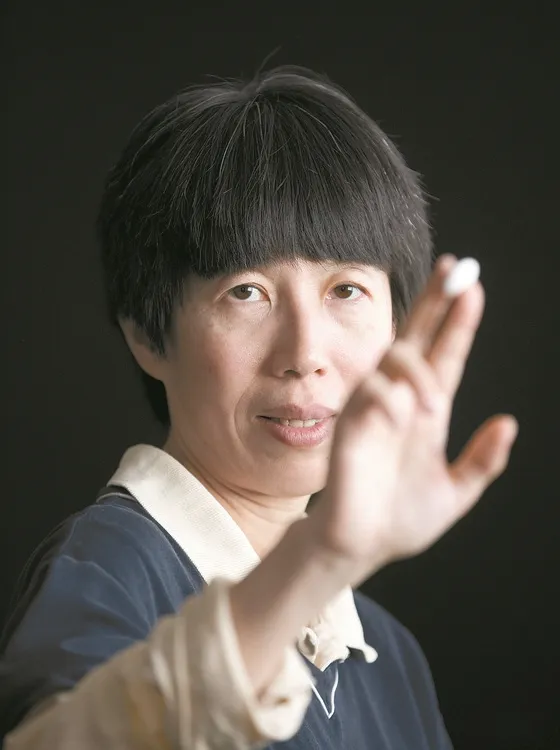
Rui Naiwei 9 Dan Pro
Rui Naiwei
Namu wiki profile | Sensei's Library profileSource: wikipedia.org
Rui Naiwei, born December 28 1963, is a Chinese professional Go player, once active in South Korea. She is the strongest recorded female Go player, and is the only woman to have won one of the major open Go titles.
Rui was born in Shanghai, China. After starting to play around 1975 (at the age of 11 - the age some other players go pro) she became a pro for the Zhongguo Qiyuan in 1985, being promoted all the way to 7 dan that year. She reached 9 dan in 1988, becoming the first woman ever to achieve that rank.
She then moved to South Korea (with the help of Cho Hun-hyeon 9 dan). She participated actively in Korean tournaments. She dominated the women's events and won two open events, always previously won by men: the Guksu (the 43rd open Guksu title in South Korea, 1999) and the Maxim Cup (2004).
Rui's style tends to be extremely aggressive, and often characterized by large scale semeai.

The rise of female Go players
Source: nature.com 05 October 2024
The professional Go system, which certifies players to participate in official tournaments and earn from their gameplay, originated in 17th century Japan with the establishment of the Four Go Houses. These state-endorsed schools significantly enhanced gameplay due to the competitive environment they fostered. By the 20th century, they paved the way for the Japanese Go Association, formed in 1924, which elevated both the gameplay level and financial support within the system. The model's success inspired similar professional Go systems in other countries, including the Korea Go Association in 1945 and the Chinese Go Association in 1962. These organizations have expanded the game's global reach, managing regional professional Go systems, and promoting the game extensively.
The journey of the professional Go system for female players, however, has a shorter history. The game, traditionally associated with religious establishments, was initially only open to men at the professional level. The introduction of a professional Go system for women began post-World War II. Japan initiated this movement in 1952 with the All-Japan Women's Championship (renamed the Japanese Female Honinbo in 1982). Over time, Japan introduced additional tournaments for female players, such as the Japanese Female Meijin in 1988 and the Japanese Female Kisei in 1997. Korea started its women's professional Go system in 1975, which was revived in 1990 after a 15-year hiatus. China embraced the women's professional Go system in 1982, highlighting its commitment when female player Rui Naiwei advanced to the semifinals of the Ing Cup World Go Championship in 1992.
The presence of successful female Go players has played a huge role in inspiring and motivating upcoming female players, and more importantly, in bringing about significant social and cultural shifts. These role models, along with support from family and fans, create a positive environment that encourages female players to pursue a career in Go.
Rui Naiwei, in particular, has been a pivotal figure in the growth of women's Go in Korea. She dominated the women's tournament and won two open national tournaments, always previously won by men: the Guksu in 1999 and the Maxim Cup in 2004. Her success as one of the first women to compete at a high level against male players challenged existing stereotypes and provided a powerful role model for many Korean women in Go. Several interviewees noted her influence, with Choi Jeong stating, "After Rui Naiwei won the Guksu title beating top players, I have dreamed of winning a world championship." Her achievements not only inspired female players to pursue professional careers in Go but also helped alter perceptions within the broader Go community, making it more accepting of female talent.